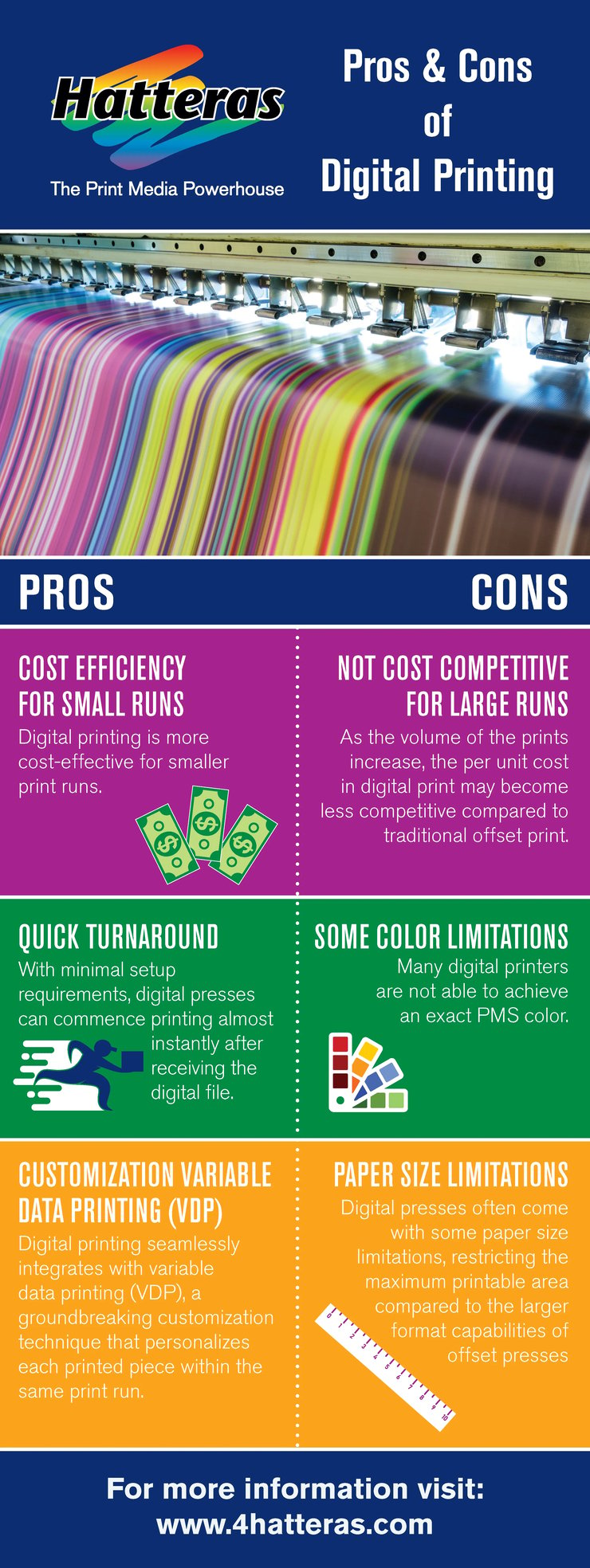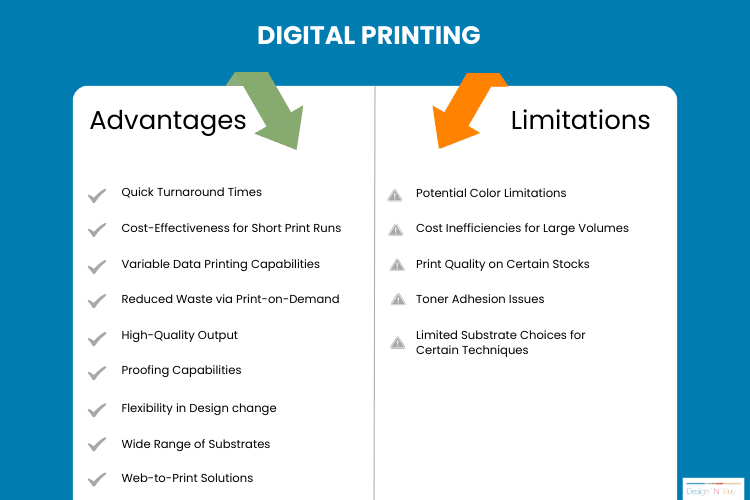Fascination About Digital Printing
Fascination About Digital Printing
Blog Article
The smart Trick of Digital Printing That Nobody is Discussing
Table of ContentsThe smart Trick of Digital Printing That Nobody is DiscussingThe Main Principles Of Digital Printing Getting The Digital Printing To WorkGet This Report on Digital PrintingThe Basic Principles Of Digital Printing The Greatest Guide To Digital Printing
Variable data printing, such as direct mail with individualized codes and addresses, is ideally suited for electronic printing. Digital quick printing just needs four steps of style, testimonial, printing and binding to obtain everything done. Digital fast printing has an unparalleled advantage: print on demand.According to PMMI, digital printing enables brand names and producers to react swiftly to client needs while enhancing the supply chain, lowering warehousing expense and waste, and appreciating faster time to market. That all noises wonderful, however how does this innovation do all that? The significant differentiator of these innovations is that there are no set-up fees and no plates with digital printing.
A Biased View of Digital Printing
This results in quicker turnaround time and lowers price when using electronic printing.
Digital printing is highly adaptable, so it's simple to make adjustments to the bundle layout promptly. It all goes back to the plates.
Extra inventory can suggest even more waste in the future. With traditional printing methods, short-run printing is just not feasible. Since an excellent style can make or damage your product, electronic printing regularly produces high-quality, clear and colorful graphics each time. Digital printing on flexible bags adds the bright, vivid, and exact graphics that virtually bid customers to connect and touch them.
Digital printing is the process of printing digital-based images directly onto a variety of media substratums. There is no requirement for a printing plate, unlike with countered printing. Digital files such as PDFs or desktop publishing documents can be sent directly to the electronic printing press to publish on paper, photo paper, canvas, textile, synthetics, cardstock and other substratums.
Digital Printing Things To Know Before You Get This
According to PMMI, digital printing enables brands and manufacturers to respond quickly to client demands while boosting the supply chain, minimizing warehousing price and waste, and appreciating faster time to market. That all sounds fantastic, yet just how does this modern technology do all that? The major differentiator of these technologies is that there are no set-up costs and no plates with digital printing.
According to Wikipedia, the greatest difference between electronic printing and conventional techniques such as lithography, flexography, gravure, or letterpress is that there is no demand to change printing plates in electronic printing, whereas in these analog printing techniques the plates are repeatedly changed. This results in quicker turn-around time and reduces cost when making use of electronic printing.

The Buzz on Digital Printing
More inventory can imply even more waste in the future. With traditional printing techniques, short-run printing is simply not feasible. Because a fantastic design can make or break your product, digital printing regularly develops top notch, clear and vivid graphics each time. Digital printing on adaptable bags includes the bright, vibrant, and exact graphics that practically bid customers to get to out and touch them.

According to PMMI, electronic printing allows brand names and suppliers to react rapidly to customer needs while boosting the supply chain, minimizing read this article warehousing price and waste, and appreciating faster time to market. That all sounds fantastic, but exactly how does this innovation do all that? The significant differentiator of these modern technologies is that there are no set-up charges and no plates with digital printing.
Excitement About Digital Printing
This results in quicker turnaround time and decreases price when using electronic printing.
Rapid manufacturing indicates obtaining your product to market faster. It likewise indicates it's easier and faster to make modifications in the future, when you change a recipe, add a SKU, or develop seasonal product packaging. Digital printing is extremely adaptable, so it's simple to make changes to the plan design quickly. All of it returns to home plates.

The 9-Second Trick For Digital Printing
Digital printing is the process of printing digital-based images directly onto a variety of media substratums. There is no need for a printing plate, unlike with countered printing. Digital documents such as PDFs or desktop publishing data can be sent out directly to the electronic printing machine to publish on paper, picture paper, canvas, fabric, synthetics, cardstock and other substratums.
Report this page